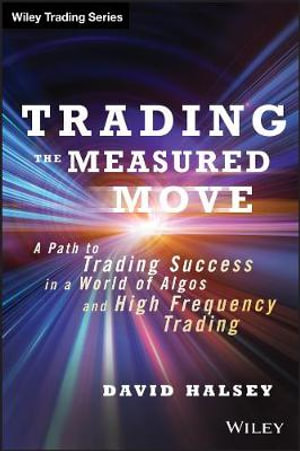 David Halsey throws out the old notion of a measured move: that you copy an AB move up (or down) and paste it on a retracement low (or high) of C to get your price target D. In Trading the Measured Move: A Path to Trading Success in a World of Algos and High Frequency Trading(Wiley, 2014) he substitutes Fibonacci levels.
David Halsey throws out the old notion of a measured move: that you copy an AB move up (or down) and paste it on a retracement low (or high) of C to get your price target D. In Trading the Measured Move: A Path to Trading Success in a World of Algos and High Frequency Trading(Wiley, 2014) he substitutes Fibonacci levels.
He uses three trade setups: the traditional 50% retracement measured move (MM), the extension 50% MM, and the 61.8% failure. When a trade is entered, its target is 123% from a swing high or low (and sometimes from a breakout) that is followed by a retracement (50% in the traditional setup). That is, the target is AB + 23%. Halsey shows both successful and failed MM trades on charts—unfortunately usually grey bars on a black background, which makes them hard to decipher.
The measured move trade setups are not stand-alones. Halsey discusses the use of multiple time frames, seasonality, NYSE tools, tick extremes and divergences, and gaps. He also discusses how to manage positions and take profits, advanced (actually, pretty basic) risk management, trading psychology, and having a trading plan and journal. (more…)

 “Don’t think that trading is fun. The trading game should be boring the vast majority of the time, just like the real-life job you have right now.”
“Don’t think that trading is fun. The trading game should be boring the vast majority of the time, just like the real-life job you have right now.”

 John Maynard Keynes was not only a renowned economist, he was an investor. He managed his own money as well as that of King’s College, his friends and family, and insurance companies. As John C. Bogle writes in his introduction to the book, “His spectacular success showed not only his passion for making money, but his growing aversion to losing it. As someone who had gained two fortunes through his trading prowess and lost them through his hubris, Keynes is a stellar example of how an investor can learn, fall on his face more than once, and still come out ahead.” (p. xxxiv)
John Maynard Keynes was not only a renowned economist, he was an investor. He managed his own money as well as that of King’s College, his friends and family, and insurance companies. As John C. Bogle writes in his introduction to the book, “His spectacular success showed not only his passion for making money, but his growing aversion to losing it. As someone who had gained two fortunes through his trading prowess and lost them through his hubris, Keynes is a stellar example of how an investor can learn, fall on his face more than once, and still come out ahead.” (p. xxxiv)